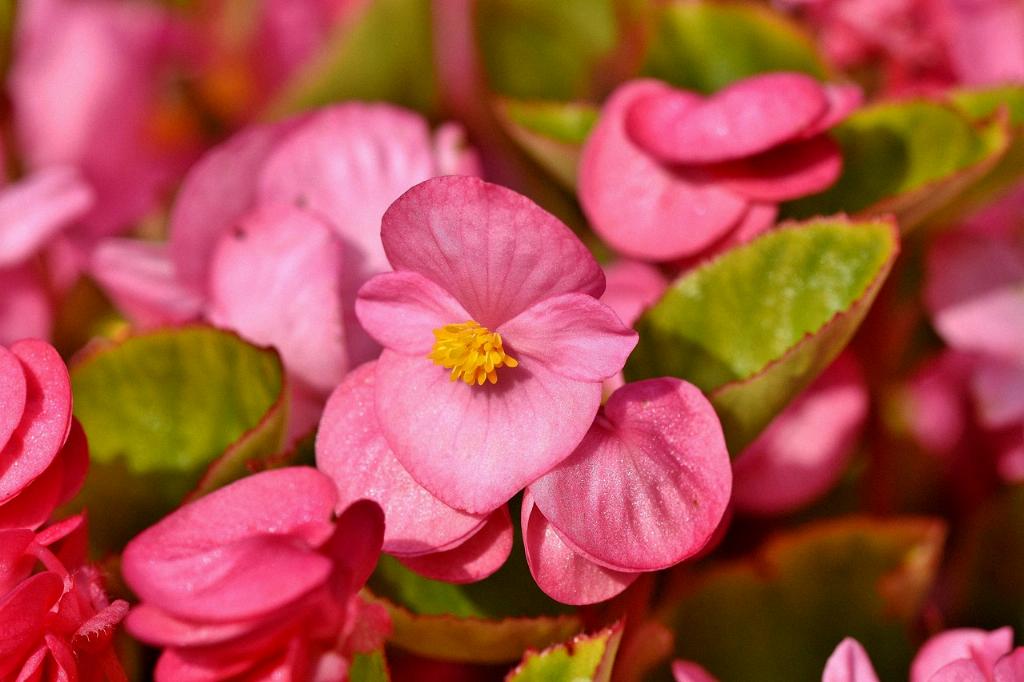Watering begonias may seem like a simple task, but it plays a crucial role in the overall health and well-being of these beautiful plants. Understanding the specific needs of begonias will help you provide them with the right amount of water to thrive.
1. Choose the Right Timing
When it comes to watering begonias, timing is key. It is recommended to water these plants very moderately but frequently. The goal is to keep the soil consistently moist without overwatering. Wait until the soil is slightly dry before watering again.
2. Be Mindful of Soil Moisture
Before reaching for the watering can, check the moisture level of the soil. Begonias prefer soil that is slightly damp but not waterlogged. Overwatering can lead to root rot, while underwatering can cause stress to the plant.
3. Consider the Environment
Take into account the environmental conditions when watering begonias. Factors such as humidity levels, temperature, and sunlight exposure can influence the plant’s water requirements. Ensure that the location of your begonias offers proper ventilation and filtered sunlight.
4. Use the Right Watering Technique
When watering begonias, aim to water the soil directly rather than the leaves to prevent moisture-related issues such as fungal diseases. Gently pour water around the base of the plant, allowing it to soak into the soil.
5. Avoid Waterlogging
Avoid leaving begonias in standing water, as this can lead to waterlogging and suffocate the roots. Ensure that the pots have proper drainage to allow excess water to escape, preventing water accumulation at the bottom.
6. Adjust Watering in Different Seasons
Adapt your watering routine according to the season. Begonias may require more frequent watering during hot, dry periods and less water during cooler months. Monitor the soil moisture and adjust your watering schedule accordingly.
7. Watch for Signs of Overwatering
Pay attention to the begonias’ leaves for signs of overwatering, such as yellowing or wilting. Adjust your watering frequency if you notice these symptoms to prevent further damage to the plant.
8. Fertilize Wisely
In addition to watering, fertilizing begonias is essential for their growth. Use a balanced fertilizer specifically formulated for begonias and apply it according to the instructions on the packaging. Fertilize sparingly to avoid nutrient buildup.
9. Consider the Type of Begonia
Keep in mind that different types of begonias may have varying water requirements. Research the specific needs of the begonia variety you are growing to ensure you are providing the appropriate amount of water for optimal growth.
10. Monitor Temperature and Humidity
Temperature and humidity levels can affect how quickly soil dries out. During hot weather, begonias may need more frequent watering to compensate for increased evaporation. Adjust your watering schedule based on the prevailing conditions.
11. Provide Consistent Care
Consistency is key when it comes to watering begonias. Establish a routine that works for your plants and stick to it to help them thrive. Regular monitoring and adjustments to the watering regimen will ensure the health of your begonias.
12. Seek Expert Advice
If you are unsure about how to water your begonias or notice any concerning symptoms, don’t hesitate to seek advice from local horticulture experts or gardening resources. They can provide personalized guidance to help you care for your begonias effectively.

